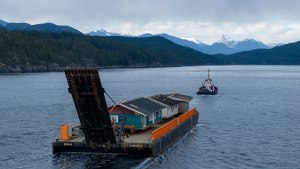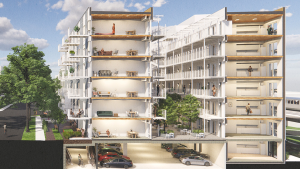There is a shortage of “good, clear aggregate” in Toronto and throughout Ontario, sewer and watermain contractors were told Monday. And what there is should be preserved for use in concrete, not buried as bedding for drain tiles, sewer and water hookups, or other, similar uses.
DCN Correspondent
Ottawa
There is a shortage of “good, clear aggregate” in Toronto and throughout Ontario, sewer and watermain contractors were told Monday. And what there is should be preserved for use in concrete, not buried as bedding for drain tiles, sewer and water hookups, or other, similar uses.
At a seminar during the annual meeting of the Ontario Sewer and Watermain Contractors Association, Percy Ford-Smith of Dufferin Aggregates said the shortage is worst for clear, three-quarter-inch (17 mm) stone. That size is needed for concrete “because you can’t make strong concrete with small stone.”
The shortage has been reported for several years and is getting worse, he said, driven by the new housing market in the Greater Toronto Area.
After all, he said, the GTA, is where 60 per cent of all newcomers to Canada elect to settle.
The settlement pattern and the consequent shortage of clear stone is a trend that can’t be stopped, he said, but it can be lived with by replacing 17 mm stone with something called high-performance bedding, or HPB.
HPB is smaller stone, he said, but is a good material for bedding for drain tiles, for foundation wall drainage, for footings, for sewer and water hookups, and for use under slab-on-grade construction.
Between 75 and 80 per cent of HPB will pass through a No. 4, sieve, he said, which really allows diameters up to 4.75 mm. It has been washed to get rid of the fine dust that clings to crushed stone.
“That dust is almost as fine as talcum powder, he said, “but it can clog drain tiles.”
But getting approval for use of HPB has been a long process.
Ford-Smith said Dufferin’s first HPB application was about eight years ago and it is just within the last couple of years that HPB has been accepted as a viable substitute for 17 mm clear stone under the Ontario Building Code.
The material performs as well as 17 mm clear stone, he said, and has a couple of advantages.
For example, it is light enough to be blown into place in such places as narrow trenches along foundation walls.
It doesn’t require compaction. And it is slightly less expensive than 17 mm clear.
At the moment, though, it is being produced only in Dufferin’s Toronto-area quarries, and while it has been shipped as far afield as Peterborough and Cobourg, transportation costs can render its use impractical.
One Ottawa-area contractor in the audience suggested he would like to use the material for projects in eastern Ontario and Ford-Smith said he should call Dufferin to ask about trucking costs.
“We’ve got the cost,” the contractor replied. “It’s too high.”
In the meantime, Dufferin’s Milton quarry, the largest quarry in Canada and one of two where the company produces HPB, is only good for about two more years, he said, and planning is underway to open up new sources of stone.
But, he warned, “that’s a long and expensive process.”










Recent Comments
comments for this post are closed